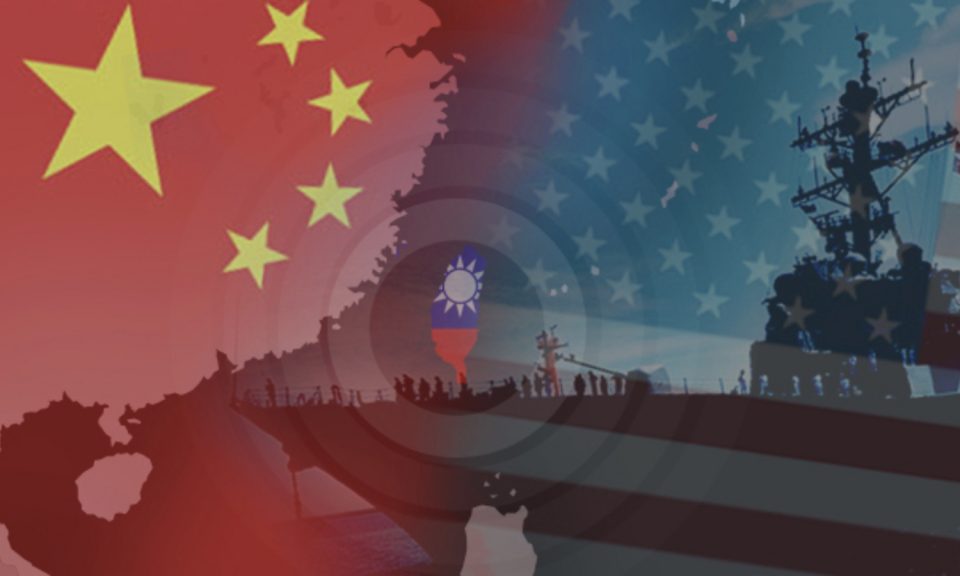In 2019, Sino-U.S. relations will be defined by the trade war, potential reunification with Taiwan, and the escalation of the new space race.
Which country is more dangerous to travel to for Americans: Myanmar or Communist China? If you picked Myanmar, a country that has been in civil war since its independence in 1948, you would be wrong.
The U.S. State Department issued a level II travel advisory to China last week, which means Americans should exercise increased caution when travelling in China. That is the same warning level the State Department issued in a travel advisory for Myanmar. Don’t forget that the last time the State Department issued a travel advisory to China was in 1989, right after Chinese government brutally suppressed student protesters in Tiananmen Square.
What prompted the travel advisory this time? China has arrested 13 Canadian citizens recently, on trumped up charges, in retaliation for Canadian authorities’ December arrest of Meng Wanzhou, the chief financial officer of China’s telecom giant Huawei. The U.S. Justice Department requested Meng’s arrest on allegations that she had violated sanctions against Iran by committing financial fraud. Now, the American government is working on extraditing Meng to the United States.
Since Meng’s arrest has ignited nationalist fever in China, with the Chinese government no doubt in a revenge mood, U.S. authorities are concerned that Chinese authorities may “prohibit U.S. citizens from leaving China by using ‘exit bans’” and “U.S. citizens may be detained without access to U.S. consular services or information about their alleged crime.” Given the enormous economic ties of the two countries, it’s extraordinary for the United States to warn against its citizens travelling to the second largest economy in the world.
China, of course, dismissed such warning as unjustified. But this represents a new low in the Sino-U.S. relationship. How much worse can the Sino-U.S. relationship get before it gets better? It depends on how the two nations address three top thorny issues: trade disputes, technology competition, and Taiwan.
On the Trade Dispute
As of January 10, there are only 49 days left until March 1, the deadline President Trump set at the last G20 summit when he would raise tariffs from 10 to 25 percent on about $250 billion worth of Chinese imports if the two countries fail to reach a trade agreement. Since December 1, China has made a few concessions, including announcing new punishments for intellectual property (IP) theft, lowering auto tariffs, resuming the purchase of U.S. soybeans, and stopping from publicly mentioning the ambitious “Made in China 2025” industrial and technology policy.
But if we examine more closely, few of these initiatives represent real progress. The new punishments for IP theft sound nice on paper, but we have been down this road many times. Since the 1990s, when President George H.W. Bush was in office, each time the United States complained about IP theft, China agreed to put some new laws on books.
Predictably, every new law was hailed as a major step forward. Yet IP theft has only gotten worse over the last three decades due to lack of enforcement. In 1992, the IP Commission estimated U.S. losses from such theft were about $225 million. In 2015, the estimated losses from such theft were in the range of between $180 and $540 billion.
Lowering auto tariffs doesn’t benefit U.S. automakers much because “the vast majority of vehicles in the world’s largest auto market are made there. China imports about 1 million cars a year – less than 5 percent of a market that totals an annual 27 million vehicles.” And ending mention of the “Made in China 2025” policy doesn’t mean China will stop making efforts toward the same goal.
Among all these initiatives, only purchasing U.S. soybeans has real and direct benefit to the United States. Even that, China did out of necessity. China is the largest soybean importer and there is no country other than the United States that can meet China’s demand.
All economic data out of China shows that the trade war with the United States has hit China hard: according to the Wall Street Journal, “factory activity [is] hitting its lowest level in nearly three years. Profits from big Chinese industrial firms also declined in November for the first time in three years.” Not to mention, “Chinese consumers have cut back, resulting in a slump in sales of cars and other goods.”
The United States isn’t immune to the negative impact of the trade war with China either. The American stock market saw its worst performance since 2008 and the worst December since 1931. Apple stock lost 10 percent of its value in one trading day after its CEO Tim Cooked blamed a sales shortfall as the result of slowing Chinese economy.
Jeffrey Gerrish, U.S. deputy trade representative, kicked off trade talks with his Chinese counterpart in Beijing this Monday. If the talks fail to make any progress, the Sino-U.S. relationship isn’t going to get any better.
On Technology Competition
The truth is that the trade talks aren’t only about trade––the real elephant in the room is the technology competition between the countries. Even if the United States eventually gets a Chinese concession to import more stuff from the United States, the United States won’t be able to either halt China’s technology advancement or contain China’s ambition to become a global tech leader.
Despite China’s economy slowing down, China continues to advance in technology development.
Only three days into 2019, China became the first country to successfully land a rover on the far side of the moon. The success of this mission has been a big boost to President Xi Jinping. It also symbolizes a new space race between the United States and China. Both nations compete to lead the new age space exploration, reminiscent of the race to the moon competition between the United States and Soviets during the cold war. The United States won the last space race against the Soviets, but can it win a new space race against China?
Compared to the Soviets, China has a much bigger and stronger economy. Chinese leaders took lessons from the Soviet’s downfall to heart. They plan China’s space ambitions in a meticulous manner. The lunar landing success is the result of years of planning, investment, and incremental successes. China already “launches more rockets into space than any other country — 39 last year, compared to 31 by the U.S., 20 by Russia and eight by Europe” and China spends “more on its civil and military space programs than Russia and Japan,” according to the Japan Times.
Even more impressive––but downplayed by western media––is that China launched a communications-relay satellite in June 2018, which was positioned 50,000 miles beyond the moon. Space Expert Deng Cheng of the Heritage Foundation said this kind of satellite is “expanding the volume of space” China can access, giving China greater ability to monitor other nations’ space assets. Whomever controls space will have control of what’s happening on earth, whether GPS technology, weather forecasts, military targets, and commercial pipelines.
Thus, even after China and the United States eventually settle their trade dispute, the technology competition between the two nations will continue to heat up.
On Taiwan
The future of Taiwan has become a heated topic since the beginning of 2019. Beijing has been alternating between a stick and carrot approach towards its goal of engulfing Taiwan. Last year, Taiwan’s pro-independence President Tsai Ing-wen and her ruling Democratic Progressive Party (DPP) suffered great defeat in local elections and Tsai resigned as the head of DPP. DPP’s defeat was seen by some Taiwanese as a victory in Beijing’s “deliberate campaign to undermine and subvert our democratic process and create division in our society.”
Just when Beijing thought it was one step closer to peacefully reuniting with Taiwan, on New Year’s Eve, President Trump signed into law the Asia Reassurance Initiative Act, which, to Beijing’s annoyance, includes increasing official exchanges between the United States and Taiwan and arm sales to Taiwan. Beijing sees this latest move as the United States throwing a lifeline to Tsai and the DPP.
In his New Year’s speech, President Xi proposed that a “one country, two systems” model––an approach Beijing used for Hong Kong––was the way for assimilating Taiwan, even though Hong Kong’s experience offers Taiwan no comfort. At the same time, Xi reiterated that he “makes no promise to renounce the use of force and reserves the option of taking all necessary means” to reunite with Taiwan.
He also said the military would target those seeking Taiwan independence and “foreign interference is intolerable.” Everyone understands that “foreign interference” is a code warning to the United States. Tsai responded that she would be open to talk only if Beijing would promote democracy and renounce the use of force against Taiwan.
It’s fair to say Beijing, Taiwan, and Washington are very far apart about Taiwan’s future. The issue of Taiwan remains the most likely issue that the United States and China may go to war over.
A new year brings new opportunities as well new challenges. Unless the two nations find a non-confrontational way to address these three thorny issues, the Sino-U.S. relationship may have to get worse before it has any hope of getting better.





